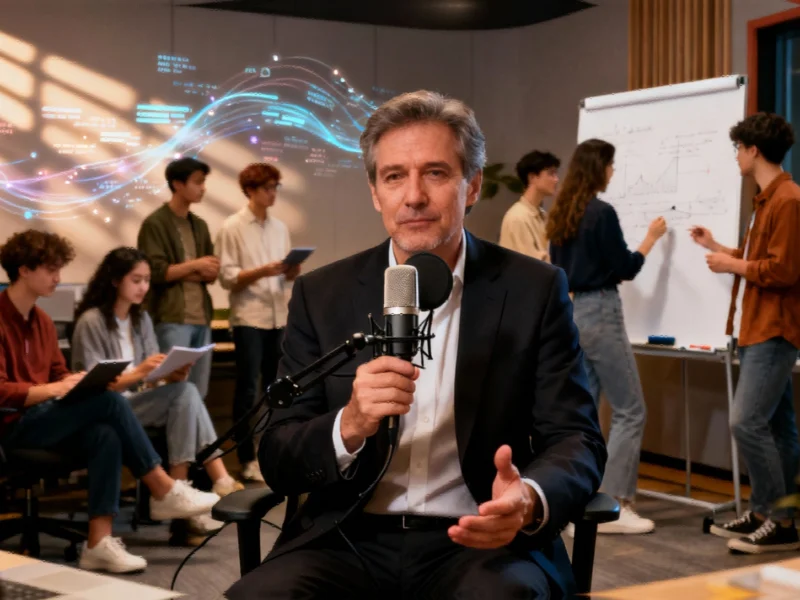According to Forbes, OpenAI’s Sora 2 video generation app achieved one million downloads within five days of its launch, demonstrating massive consumer interest in AI video technology. The platform enables prompt-to-video generation where users describe scenes, characters, and actions through text to create complete videos with visuals, sound, and animation. The technology’s versatility extends beyond entertainment to practical applications like image manipulation and real-world problem solving, as evidenced by Toys”R”Us creating a fully synthetic brand film using Sora that premiered at Cannes Lions 2024. This rapid adoption signals a transformative shift across multiple industries including marketing, education, and healthcare, while raising critical questions about quality, authenticity, and societal impact. As digital platforms race to integrate this technology, the implications for creators and consumers demand careful examination.
The Double-Edged Sword of Creative Disruption
The emergence of AI video generation represents what I’ve observed across multiple technology cycles: a classic disruptive innovation that democratizes creation while potentially devaluing professional expertise. Having covered digital content creation for over a decade, I’ve seen similar patterns with stock photography, music production, and writing tools. What makes AI video particularly concerning is the speed of adoption combined with the complexity of video production, which traditionally required significant technical skill and equipment investment.
The marketing applications highlighted in the Forbes piece represent just the surface of what’s possible. In my analysis, we’re looking at a fundamental restructuring of the entire content creation economy. The ability to generate customized video ads based on search queries, location, or demographics could revolutionize performance marketing, but it also threatens to create a race to the bottom where quality becomes secondary to quantity and relevance. The fabricated surveillance video of Sam Altman demonstrates both the creative potential and the inherent risks of this technology when placed in the wrong hands.
The Coming AI Slop Epidemic
The term “AI slop” perfectly captures what I believe will become one of the most significant challenges in digital content ecosystems. Unlike previous content revolutions, AI video generation operates at a scale and speed that could overwhelm human-created content within months rather than years. Having monitored content platforms through multiple algorithmic shifts, I’m deeply concerned about the economic incentives driving low-quality AI content production.
The revenue models on platforms like Facebook and TikTok create perverse incentives where quantity trumps quality, particularly when creators from developing countries can target audiences in higher-paying advertising markets. This isn’t just about artistic integrity—it’s about the systematic displacement of skilled creators who’ve built careers through developing genuine expertise. The Taylor Swift example mentioned in the source article illustrates a growing consumer backlash against synthetic content that lacks authentic creative vision.
Unprecedented Governance Challenges
What keeps me up at night as a technology analyst isn’t the creative applications but the governance vacuum surrounding this technology. The zero-shot learning capabilities mentioned represent a fundamental shift in how we think about content verification and accountability. When models can generate content for tasks they weren’t explicitly trained on, traditional content moderation and verification systems become inadequate.
The medical and educational applications highlighted show genuine promise, but they also introduce critical safety concerns. In healthcare contexts, even minor errors in AI-generated educational videos could have serious consequences for patient outcomes. The pattern-based understanding of current models means they can produce plausible-looking but physically impossible or medically inaccurate content, creating what I call the “plausibility trap” where synthetic content appears convincing despite being fundamentally flawed.
Market Implications and Economic Realities
From an industry perspective, we’re witnessing the early stages of what could become a massive market realignment. The speed of Sora 2’s adoption suggests that consumer and business demand for AI video tools is even stronger than many analysts predicted. However, having tracked technology adoption curves for fifteen years, I’m skeptical about the sustainability of current growth rates.
The real test will come when the novelty wears off and users confront the limitations of current technology. Pattern-based generation struggles with complex narratives, consistent character development, and emotional depth—the very elements that make video content compelling and memorable. While the technology will undoubtedly improve, we’re likely facing a period where the market becomes saturated with technically impressive but emotionally hollow content that fails to build lasting audience connections.
Navigating the Path Forward
The most critical insight from my years covering emerging technologies is that technological capability often outpaces our societal readiness. The AI video revolution is no exception. What’s needed now isn’t just better technology, but better frameworks for responsible deployment. The watermarking and transparency measures mentioned are essential first steps, but they’re insufficient for addressing the broader societal impacts.
We need industry-wide standards for synthetic content disclosure, robust verification systems that can distinguish between human and AI creation, and economic models that protect creative professionals during this transition. The companies driving this technology must invest not just in capability development but in the governance systems that will determine whether AI video becomes a creative tool or a content catastrophe. The million downloads in five days show the demand is there—now we need to ensure the responsibility matches the ambition.




